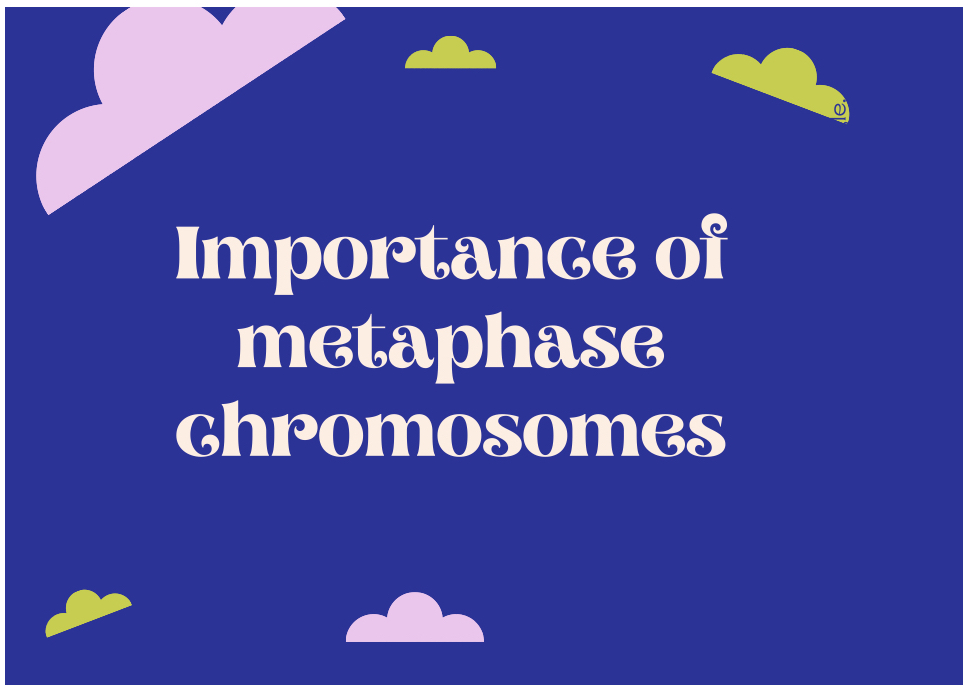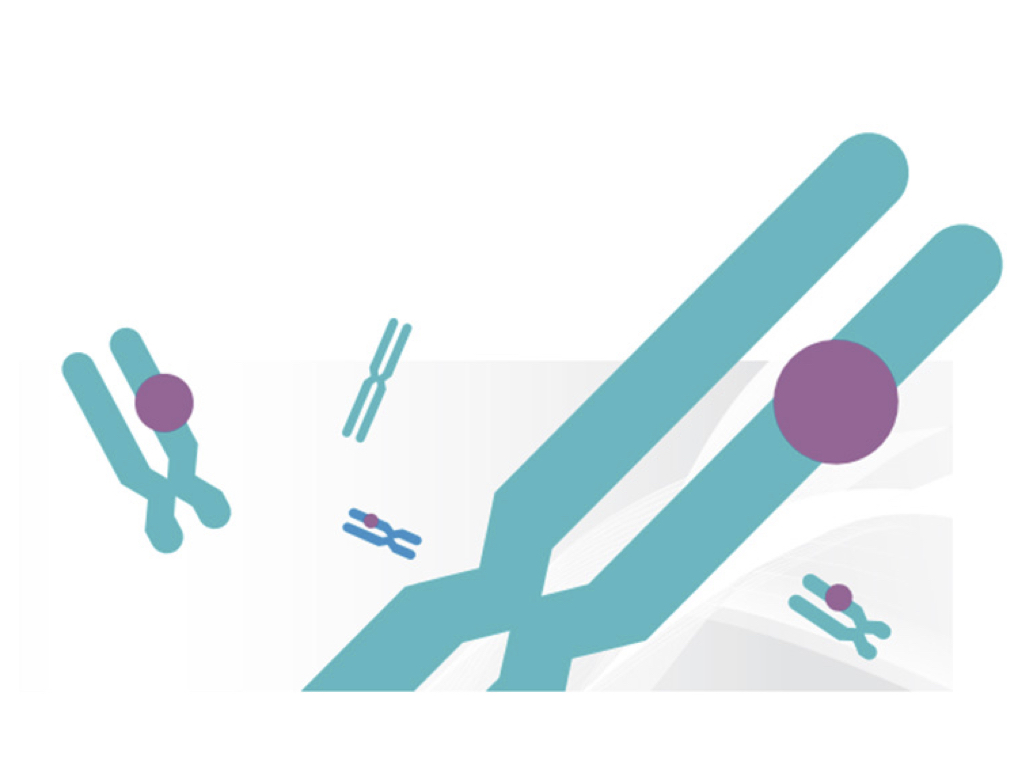Metaphase chromosomes are often known as metaphase plates or “meta’s” only in technical terms, have significant importance in genetic research, especially in cytogenetics and karyotyping studies.
Techniques like conventional karyotyping, FISH- fluorescence in situ hybridization and SKY highly rely on metaphases. And therefore good, well-separated and sharper metaphases have been the objective first achieved.
Although the first impression for cytogenetics is to achieve well-separated chromosomes but achieving metaphase, a good metaphase chromosome plate is what the researcher needs.
So here are a couple of reasons explains why we need metaphase chromosomes in clinical research. Here is the article, concentrating on showing the importance of metaphase and how chromosome separates during.
But before that, we first understand the general process of cell division and metaphase.
Introduction to cell division:
The cell division process ends in new cells, meaning it forms new cells. Subsequently, genetic material also copies and separates. The division process is that’s why very important for us.
The process results in the formation of new cells and tissues. Meiosis and mitosis are two different cell division types occur in somatic cells and germ cell, respectively.
Usually, prophase, metaphase, anaphase and telophase are four stages of cell division, we aren’t going into much detail because it’s not the point to discuss.
Broadly events that happen during each stage are elaborated here:
- In the prophase, the nuclear envelope break opens, spindle fiber starts appearing and centromere starts moving towards opposite poles.
- In the metaphase, chromosomes get condensed, lineup, appear distinctly and in the center attached with spindle fibers.
- Anaphase leads, splitting centromeres and pulling chromosomes towards opposite poles. Also, spindle fibers begin to elongate cells into two.
- During the telophase, chromosomes complete moving to poles, nuclear envelope starts appearing and mitotic spindle fibers break.

Two new cells form subsequently.
Our interest is in “metaphase” only, the reason is the status of chromosomes during this. So first, let me explain what exactly happens during the metaphase, in detail.
What happens during metaphase?
The term metaphase was proposed by Strasburge in 1884. It’s a Greek word, as like other biology terminologies. “Meta” means “adjacent” and “phase” means “stage”.
Important events that occur during, are:
- Condensing genetic material into chromosomes
- Nucleus disappearing
- Nuclear membrane breaks
- Chromosomes appear in the cytoplasm.
- Spindle fibers attached to each chromosome
- Chromatins start pulling towards poles.
The metaphase is further micro-divided into prometaphase and late metaphase ends up into anaphase. DNA is packaged on chromosomes with the most condensed forms. However, during the anaphase, it becomes even more condensed and looks so tiny, that is why anaphase isn’t advisable.
Chromosomes can be seen under the microscopes during the metaphase.
These top qualities make metaphases or metaphase chromosomes worth useful in clinical research, cytogenetics and cancer studies.
Importance of metaphase chromosome:
The metaphase chromosomes are condensed, more tightly wrapped and well-distinguishable. Also, cells become swell more, appear bigger and lack nuclear membrane.
Well-separated metaphase chromosomes can be seen under the microscope, are larger in size and can be studied. However, special techniques are required to visualize.

During, what researchers do is first culture cells and arrest them at metaphase. As we need only metaphases, mitotic inhibitors are added to the culture in order to stop spindle fiber formation and cell division progression.
To visualize, study and investigate various metaphase chromosomes, G staining or Giemsa staining, followed by GTG banding has been performed.
Put simply, the Giemsa stain gives a classic navy blue color to chromosomes and can be seen under a microscope.
GTG banding- Giemsa trypsin Giemsa banding techniques have been useful to count the number of chromosomes and study structural deformities.
The classical cytogenetic technique such as karyotyping rely on this principle, however, metaphases have been so important in FISH as well.
Other banding techniques are also performed in order to study different parameters related to chromosomes and to find out various chromosomal abnormalities. Such techniques and their related articles are given here:
The appearing chromosomes are known as a karyotype, a standard form of investigating chromosomes. Although for different applications, suitable modifications are performed.
In FISH which is Fluorescence in situ hybridization, scientists use metaphase chromosomes or metaphase plates to find copy number variations. CNV is deletion or duplication of chromosome parts.
Here metaphase chromosomes are hybridized with fluorescence-labeled probes followed by microscopic analysis. Banding or hybridization pattern reveals if chromosome part is missing or inserting.
SKY- spectral karyotyping is also a modification in which various colored probes are hybridized to get different colored chromosomes. This even helps to distinguish copy number variations more precisely.
Metaphases also have a significant role in cancer studies. Cancer is abnormal cell growth. The cancer etiology, progression and transformation can be studied by observing and investigating metaphases.
Various techniques including conventional microscopy and fluorescence microscopy are used for different studies and purposes.
Counting metaphase plates:
On this blog, we are covering more technical things rather than theoretical ones. So everything should have been discussed here. Metaphase plates are the whole bunch of all chromosomes of a single cell.
Meaning, all 46 chromosomes of a single cell are our metaphase plate. In order to achieve accuracy in results, we need to count multiple metaphase plates as well as the number of chromosomes in each.
First, we need to identify and count every possible metaphase plate using the 10X conventional microscopy lens. If a sufficient number of plates are observed, our culture can be said ‘successful’ otherwise things should be repeated.
Once we have done, metaphases are observed under 45X followed by 100X. The number of chromosomes and their structure are counter and observed from every metaphase plate counted.
Usually, 50 metaphase plates are counted, analyzed and karyotyped to get the best results in cytogenetic studies. Notedly, those technical things also have mentioned in the report too.
Wrapping up:
Metaphase chromosomes are the first choice for cytogenetic studies which are commonly employed for prenatal genetic testing. However, I personally like prometaphase or near anaphase chromosomes.
Anaphase or pro-anaphase chromosomes are more enlarged and having more bands. It provides ease in the investigation. Also, minor structural variations can be studied.
Common FAQs:
How many chromosomes are observed during metaphase?
In a normal metaphase cell, 46 chromosomes are present, however, in the case of aneuploidy, the number may differ. For example, in the case, of trisomy, 47 and monosomy, 45 chromosomes are seen.
Where are chromosomes line up during metaphase?
The metaphase is a cell division stage during which the chromosomes are lined up in the center of a cell, in a linear fashion to attach with spindle fibers.
What happens to chromosomes during metaphase
During the Metaphase, chromosomes lined up in the center and start migrating towards poles. In This phase, DNA is packed on chromosomes- a tight, organized structure.
Why only metaphase chromosomes are used in karyotyping?
Only the metaphase chromosomes are highly recommended because, during metaphase, chromosomes appear well-separated, condensed and larger. Abnormalities can be ruled out easily.


